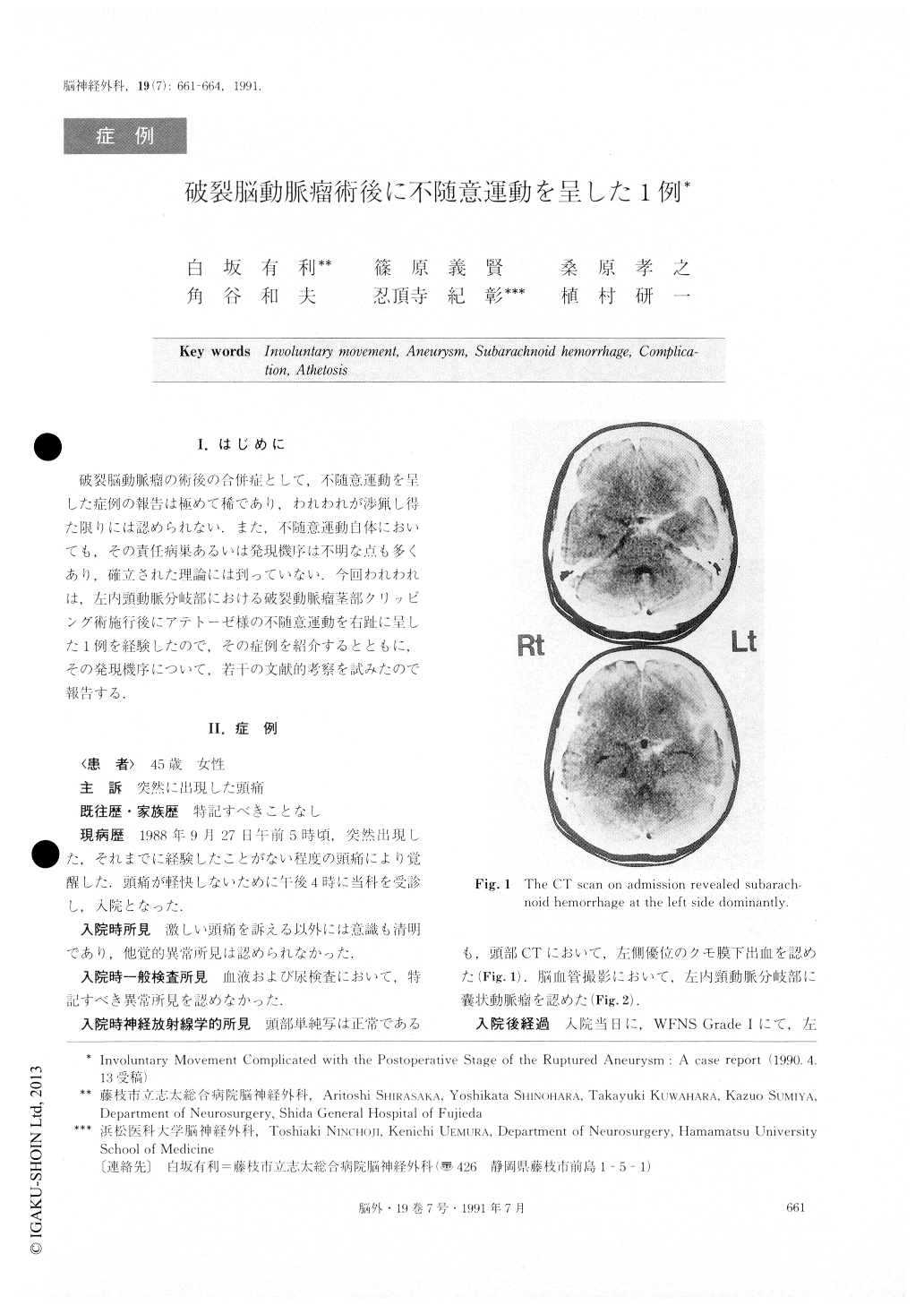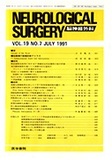Japanese
English
- 有料閲覧
- Abstract 文献概要
- 1ページ目 Look Inside
I.はじめに
破裂脳動脈瘤の術後の合併症として,不随意運動を呈した症例の報告は極めて稀であり,われわれが渉猟し得た限りには認められない.また,不随意運動自体においても,その責任病巣あるいは発現機序は不明な点も多くあり.確立された理論には到っていない.今回われわれは,左内頸動脈分岐部における破裂動脈瘤茎部クリッピング術施行後にアテトーゼ様の不随意運動を右趾に呈した1例を経験したので,その症例を紹介するとともに,その発現機序について,若干の文献的考察を試みたので報告する.
Abstract
Involuntary movement complicated with the postop-erative stage of the ruptured cerebral aneurysm is ex-tremely rare. And, the pathophysiology of the involun-tary movement has not been established yet. The au-thors report such a case because of its rarity and to make the mechanism of its appearance clear.
The case was a 45-year-old female who was trans-ported to our clinic after the onset of sudden headache. On admission, she had no neurological deficits without severe headache. CT scan revealed subarachnoid hemorrhage, and left carotid angiogram showed an aneurysm at the bifurcation of the left internal carotid artery. On the day of admission, neck clipping for the aneurysm was successfully performed. Postoperative course was uneventful without mild right hemiparesis which diminished until two weeks after operation. Since the 24th day from operation, athetoid involuntary movement occurred to her four toes.123I-IMP SPECT revealed low perfusion from left frontal base to caudate, and CT scan showed atrophy of the left caudate.
Athetoid involuntary movement as postoperative complication of ruptured cerebral aneurysm has not been reported without our case. We suppose it was caused by the ischemic effect of the left caudate clue to the operative retraction or the delayed vasospasm after subarachnoid hemorrhage.

Copyright © 1991, Igaku-Shoin Ltd. All rights reserved.


